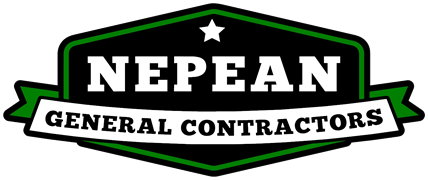Low Impact Development (LID) & Stormwater Management
Low Impact Development Design
Stormwater Management
For all your LID needs - from engineering, to plantings, to construction
Rainwater - we all have to deal with it - and some of us face larger challenges than others from this water from the sky. Flooding is a common issue amongst landowners, and remains an ever evolving area of study for the industry. Since the early 2000s, the go-to for stormwater management has been the design and construction of systems that collect, convey and retain water, generally allowing it to sit and release slowly over time. You may have seen large ponds constructed in new subdivisions, particularly in urban areas. In rural settings, the use of ponds is still common - but often combined with large ditches and swales. While often home to geese and wild life, these ponds are primarily intended to manage rainwater and release the water in a controlled manner.
The challenge with the traditional methods is the amount of land that is used to build these traditional measures. In a rural setting, this may be less of a concern, but in an urban setting where land values are high - the installation of large stormwater management systems can be construed as a costly endeavour. They also come at significant long term maintenance costs to the municipality - and present with challenges to the general climate too. Large ponds are known to increase water temperatures - which can be an issue to the receiving ecosystem.
The solution is Low Impact Development - which serves to deal with rainwater at the source - WHERE IT LANDS! That means implementing small, lot-by-lot measures - rather than relying on one single, large facility.
At Nepean General Contractors (NGC) we have both the engineers and landscape experts required to design and install these complex low impact development features.
Incorporating Landscape Design
Low impact design (LID) as an application has been around for decades. LID refers to stormwater management features that have been incorporated into the landscape and address rainwater at the source - where it lands. Rather than a single, end-of-pipe facility like a stormwater pond, LID addresses rainwater through one or many small features, all with the purpose of reducing the amount of water that flows on from where it landed. Examples of LID include green roofs, rainwater gardens, rainwater harvesting and cisterns, just to name a few. These small scale systems can be employed across an entire subdivision, ultimately reducing the overall burden on an end-of-pipe facility like a pond. Current industry practice does not accept the full replacement of an end-of-pipe however it can dramatically reduce the size of the facility - allowing for more development on land that would otherwise have been occupied by a large pond.
Small Scale
The principles of LID practice can be applied on a large scale to an entire subdivision design but they can also be applied to small scale areas like individual homes. Retrofit design options are easily incorporated into an overall landscape design, and the outcome can be both visually appealing and practical. A properly designed system can offer an oasis while offsetting ongoing flooding issues. Contact us today to see if LID may be a good fit for your property.
Real Life Examples
LID practices have been used throughout the Greater Toronto Area for a number of years, and the practice has been slowly moving to the Ottawa Valley. The City of Ottawa has been employing LID design within the downtown area on road reconstruction practices through the installation of bioswales (rainwater gardens) in the boulevards. These design features help minimize the burden on the underground pipe network. LID practices are growing in popularity, and it is expected that with new design criteria specified by large provincial approval agencies like the Ministry of the Environment, Conservation and Parks, LID practices may soon be mandatory to address water balance requirements from local approval agencies like the various local conservation authorities.
NGC staff have been keeping up with evolution of both the legislation and design standards and we are confident that LID is the way of the future of landscape and storm management design. Our multidisciplinary team ensures that we are able to address both sides of the issue - from both a water management and a planting perspective.
Construction
Certain LID practices like rainwater gardens require specific soil mediums to meet the design requirements of the system. Our experienced construction staff have the means and expertise to prepare and install the key criteria for the system. For example, soil requirements for bioswales and rainwater gardens are very specific. If the improper soil medium is used, the system will not behave as intended. Our staff are aware of the importance of not only proper design, but most importantly, proper installation. We take pride in making sure the job is done right the first time.
If LID is of interest to you, or if you have been asked by an approval agency to employ LID practices in your development, please do not hesitate to reach out to discuss your project further.
If you'd like to connect with our team and see if Low Impact Development might be the solution to your drainage problem - contact us today! Give us a call at (613) 894-8683 or fill out the "Request Your Estimate" form and we'll get right back to you. We respond to all incoming email requests so if you have not received an email response within 1-2 business days - please check your junk mail!
